Welcome to Creature Feature, a weekly series from the CELT education team highlighting local wildlife. Each week, we will share a short introduction to a local organism that you might encounter in your backyard or on our trails.
Have you ever been walking in the woods and heard a loud, high, series of piping calls usually lasting for a few seconds? Or the very loud sound of something hammering into a tree? Then you have probably heard a pileated woodpecker (Dryocopus pileatus)!
Of the nine species of woodpeckers that live in Maine, the pileated is by far the largest. With its bright red crest of feathers on top of its head, and large black and white body, it is a beautiful and impressive bird to see.
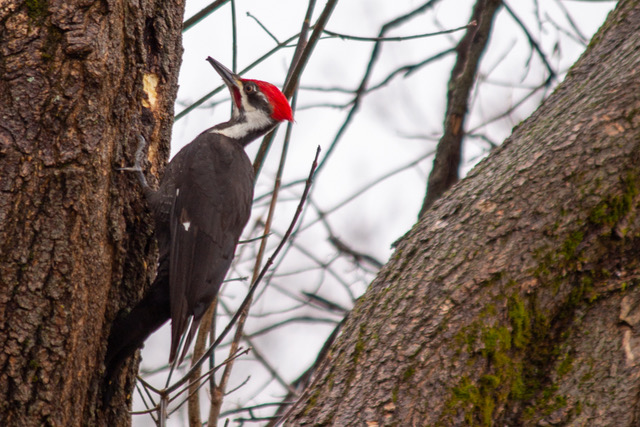
The pileated woodpecker is a year-round Maine resident who lives in mature deciduous or mixed deciduous-coniferous woodlands. Its favorite meal is carpenter ants but will also supplement with other ants, wood-boring beetle larvae, and other insects such as flies, caterpillars, cockroaches, and grasshoppers. They also eat wild fruits and nuts, and even poison ivy! Occasionally, pileated woodpeckers will even visit backyard bird feeders for seeds or suet.
Pileated woodpeckers are perfectly adapted for hanging out on trees. While they have four toes like most birds, two of the toes face forward and two face backwards! This helps them hang on to the side of trees, with the back toes giving them greater grip and balance. Their sturdy tail feathers also help with balance.
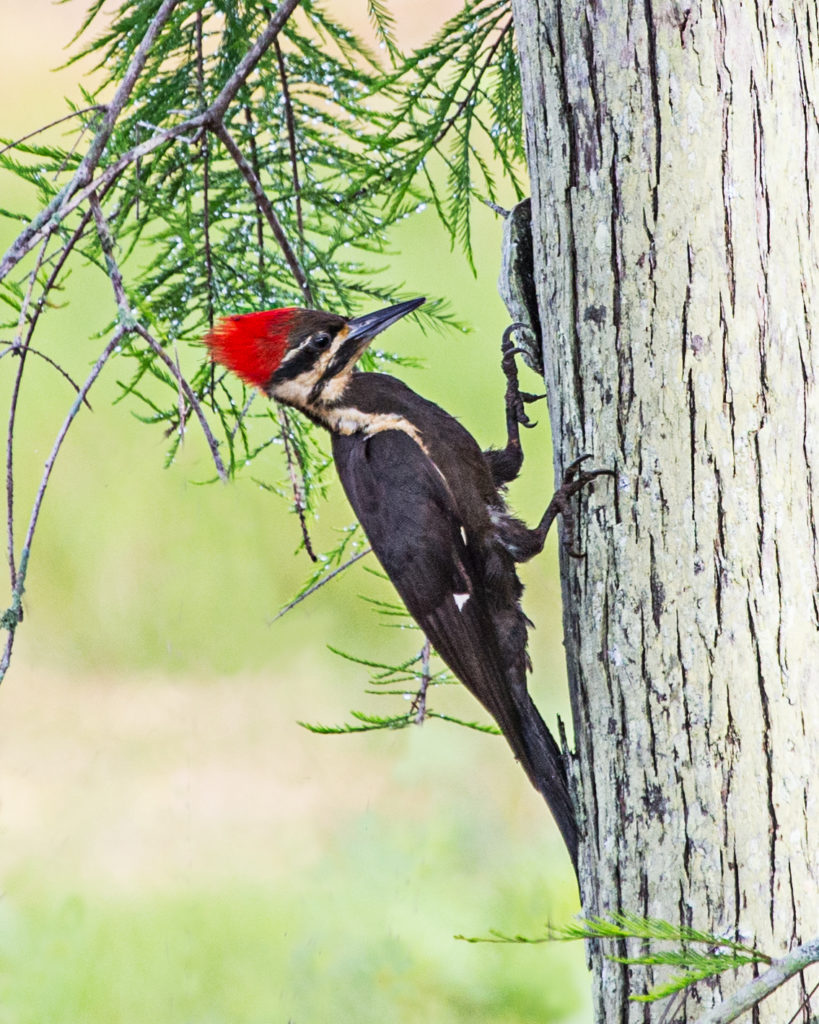
Since most of the pileated woodpeckers food comes from trees they need a way of getting that food. A pileated’s beak is the perfect tool!
- Its chisel shape combined with powerful neck muscles allow the woodpecker to dig deep into a tree to find insects.
- Its tongue is 3 times as long as its beak and has tiny barbs at the end which enable it to grab insects.
- That long tongue also helps in protecting the woodpeckers brain. When the pileated woodpeckers tongue is not grabbing insects it is wrapped around the inside of their skull to provide padding while they are hammering against a tree!
Have you ever noticed some larger oblong or almost rectangular holes in trees (particularly dead trees) while walking in the woods? Those are the unique shaped holes the pileated woodpecker makes while looking for food. You can also look for large piles of wood chips at the base of the tree, another sign that a pileated woodpecker has been at work.
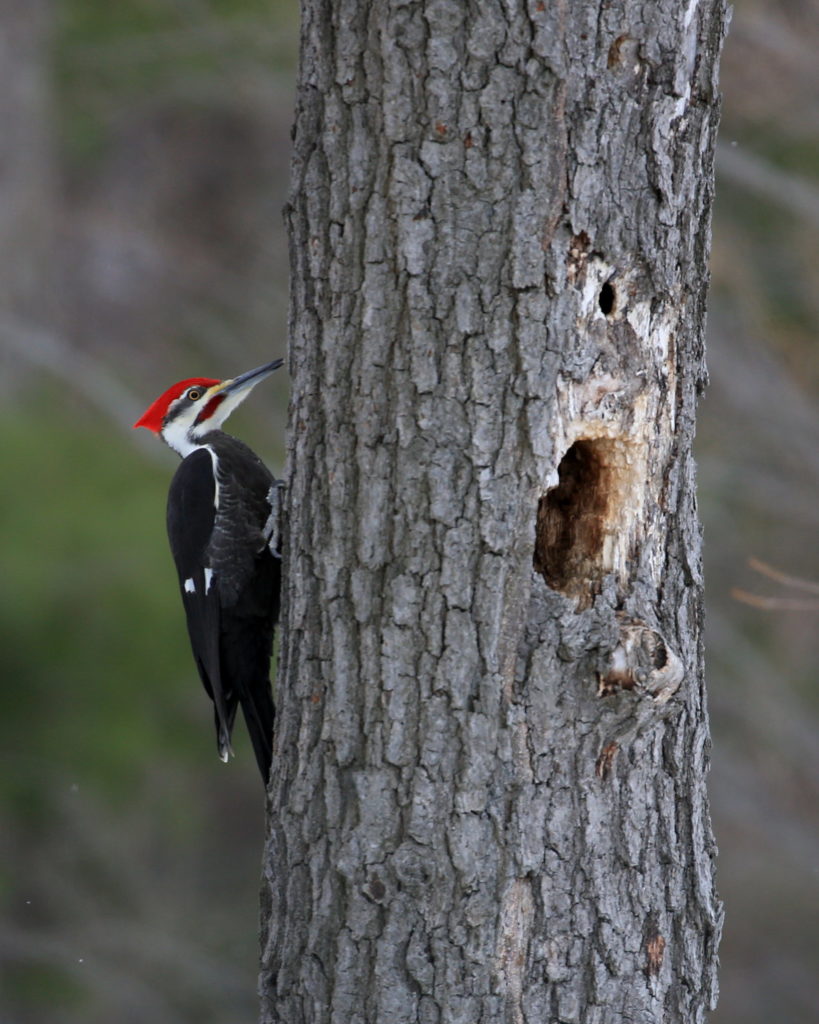
Pileated woodpeckers make large, deep, rectangular holes (Photo by seabamirum) 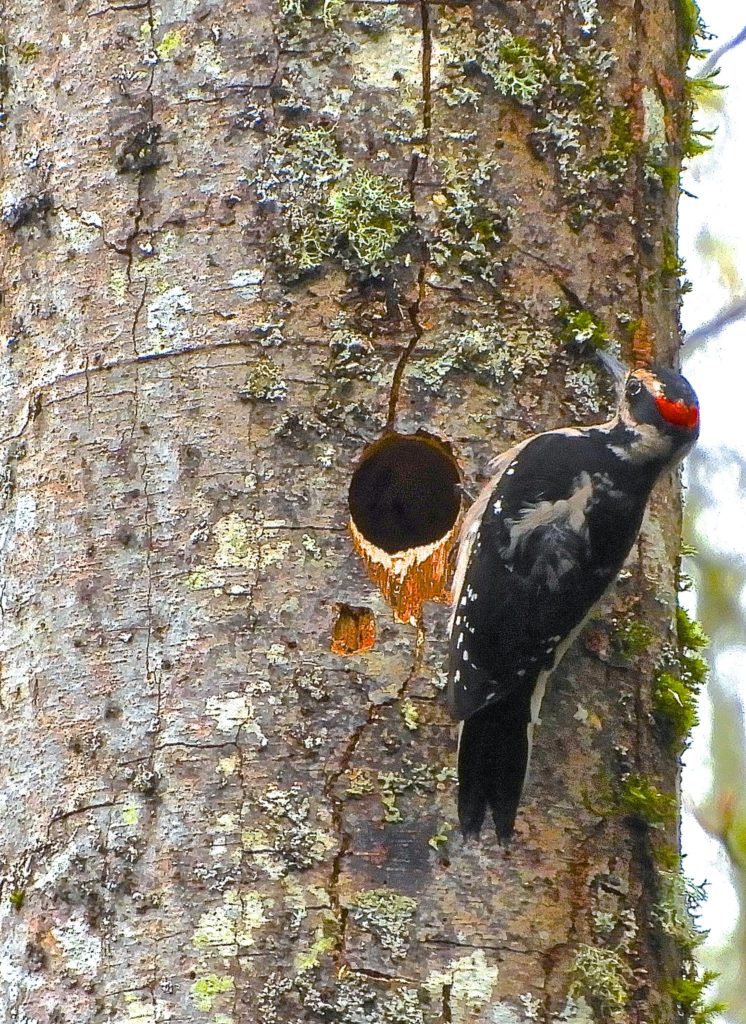
Hairy woodpeckers leave smaller, round holes (Photo by Peter Stevens) 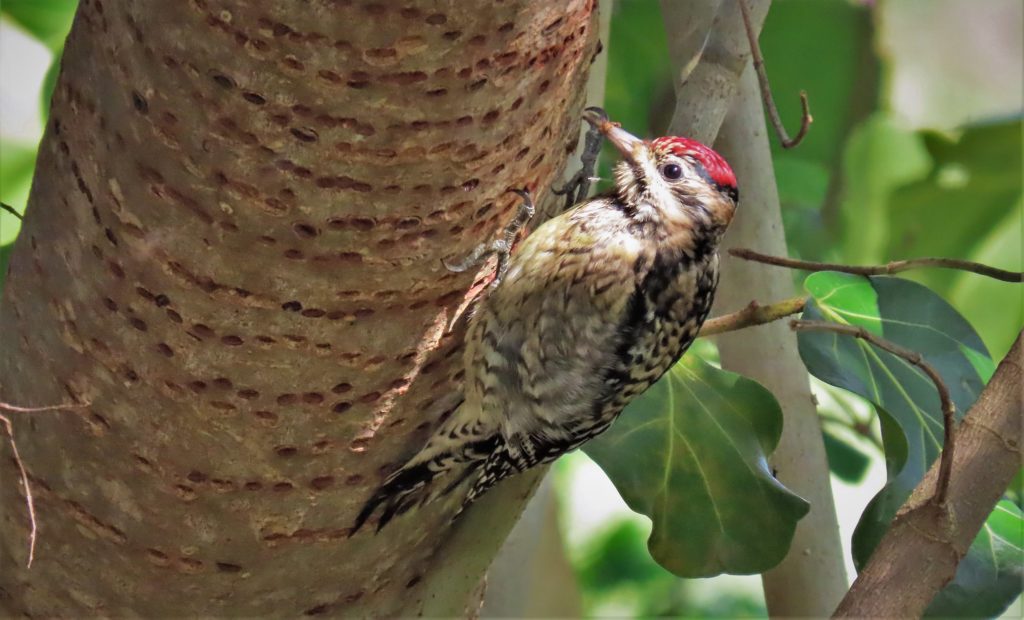
Sapsuckers make long rows of tiny holes (Public Domain)
Next time you are walking one of the CELT trails, listen for the Pileated woodpecker and see if you can find their signature shaped holes in a tree!
